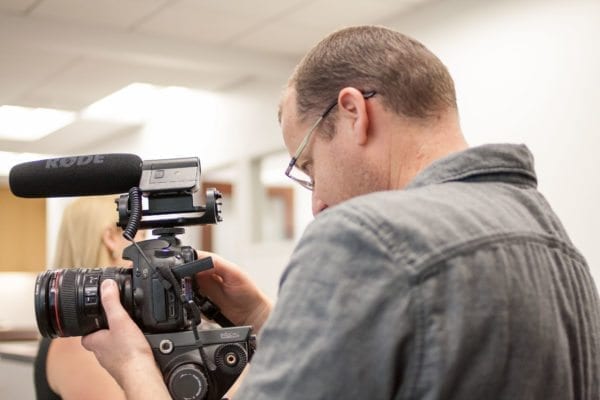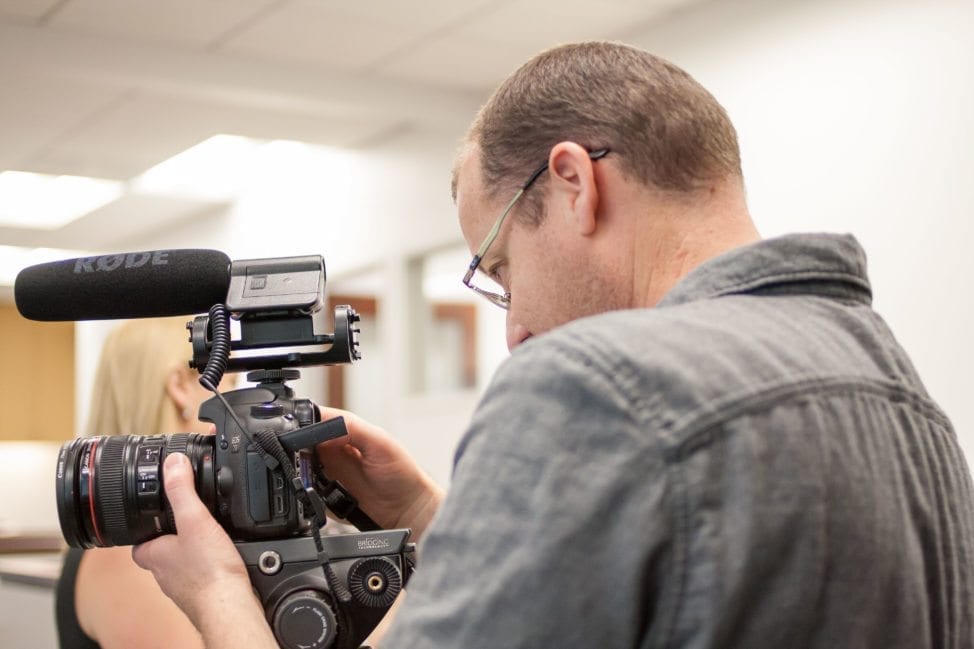Inside Vance Wealth Group’s Business Video Session
Video marketing can no longer be ignored.

Brian Schlick shoots during a Business Video Session.
As the social media platforms we love — Facebook, Instagram, Snapchat — add more and more video capabilities, we can’t seem to help ourselves from clicking that play button. Whether we’re at work, waiting in line at the bank, or momentarily checking out of reality, internet video marketing is becoming a legitimate consumer addiction — and fast.
Video content is projected to represent 74% of all internet traffic by the end of 2017, according to digital marketing educator hubspot.com. Social media platforms have supported this assertion by shifting updates to focus on video, as well.
The digital marketing industry seems to be in agreement, but what do consumers say? One in four reported they lose interest if a company doesn’t have video, and nearly 75% believe a video that describes a service is important and influences their decision to buy, according to a study by Animoto. In fact, 59% find it helpful to watch a video more than once before purchasing.
If video hasn’t killed traditional advertising, it’s putting up a fair fight.
So the next question becomes: How do I navigate a young and evolving industry? Even once you’ve decided to delve into video marketing, it’s tough to figure out where to start. There’s professional video, social video, live video and everything in between. The key is figuring out when to use each type — and for what purpose.
Similar to traditional advertising, you want your video marketing message and format to match the target audience, and if you’re like most businesses, you probably want to appeal to multiple audiences across several channels to achieve this goal.
“We tell clients that building strong video marketing is like building a house,” Brian explained. “Your professional introduction video is the foundation, and professional video that describes your services establishes the framework. Everything after that — topic-specific video, FAQ videos, targeted video marketing campaigns, live video, selfie videos — adds character to the house.”
Take the videos by Vance Wealth for example. John Vance’s introduction video answers vital questions for new and potential clients, as well as communicates the company’s values and commitments. In just two minutes, you get an understanding of Vance’s philosophy, as well as a surface-level introduction to his services. Basically, he knocks it out of the park.
As you peruse the Vance Wealth website, additional short videos provide in-depth information about each of the firm’s specialties. Not only do you get targeted information on each page, but you also begin to feel a connection with John Vance. With just one visit to the website, your questions are answered, and hopefully, any anxiety you may have about using this new service has been calmed to a degree.
What’s the takeaway? Consumers are drawn to video because it showcases the faces behind the business — and people are connected to people, not businesses. That means video marketing can sell anything you can, even while you’re fast asleep or dealing with another client. Whatever marketing goal you can dream up, video can probably achieve.
So what’s next? Take a deep breath, and dive in.
Cherish your story,
Kirsten
More Like This:
What To Expect During A Business Video Shoot With SchlickArt
